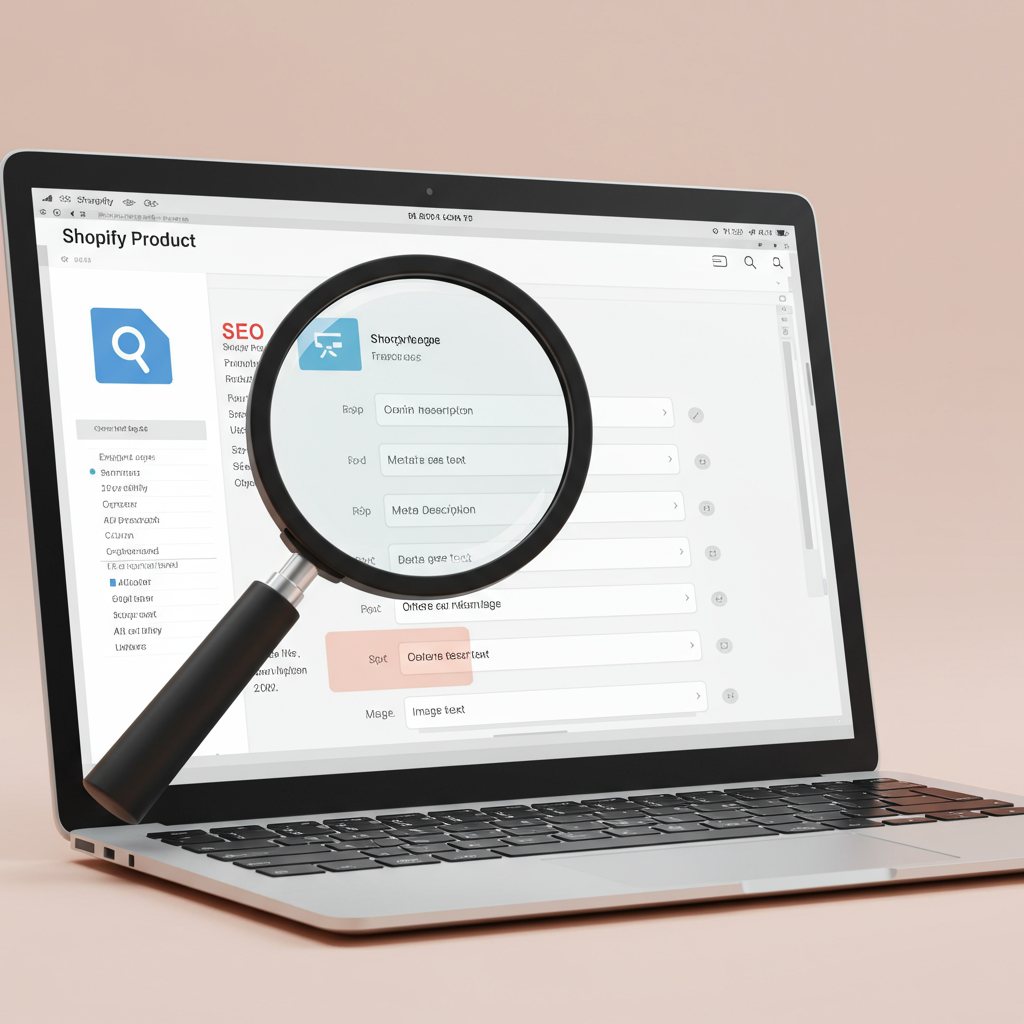Unlock higher rankings and boost sales by optimizing your Shopify product pages for search engines.
Welcome, fellow Shopify merchants! Today, I want to dive deep into a topic that can significantly impact your online store’s success: optimizing your product pages for search engines. Product page SEO isn’t just about getting traffic; it’s about attracting the *right* traffic – customers ready to buy.
Think about it: your product pages are where the magic happens, where potential customers decide to convert. If these pages aren’t visible on Google, you’re missing out on a massive pool of highly-intent buyers actively searching for what you offer.
Shopify provides a solid foundation for SEO, but it’s up to us to leverage its features effectively. We have direct control over crucial elements like meta titles, meta descriptions, and URL handles for each product, which are vital for search engine visibility.
Before you write a single word or adjust any settings, the most critical step is thorough keyword research. This isn’t just about finding popular terms; it’s about understanding what your ideal customer types into Google when looking for your specific product.
Focus on long-tail keywords – phrases of three or more words that are highly specific. For example, instead of ‘running shoes,’ think ‘men’s waterproof trail running shoes size 10.’ These have lower search volume but much higher conversion intent.
Utilize tools like Google Keyword Planner, Ahrefs, Semrush, or even Google’s ‘People also ask’ and ‘Related searches’ sections. Look at what your competitors are ranking for and identify gaps you can fill with your unique product offerings.
Your product title, which typically becomes your H1 heading on the page, is incredibly important. It should be descriptive, include your primary keyword, and be compelling enough to grab attention and accurately represent the product.
The meta title is what appears in the browser tab and as the clickable headline in search results. Keep it concise (around 50-60 characters), include your main keyword, and make it enticing to encourage clicks from searchers.
This short snippet (around 150-160 characters) under your meta title in search results is your chance to sell the click. Summarize the product’s benefits, include a call to action, and naturally weave in secondary keywords to enhance relevance.
This is where many merchants fall short. Don’t just list features; tell a story. Highlight benefits, solve customer problems, and use rich, descriptive language that resonates with your target audience, making them visualize owning the product.
Naturally integrate your primary and secondary keywords throughout the description. Avoid keyword stuffing; the text should flow naturally and be easy for humans to read. Break up long paragraphs with bullet points and subheadings for better readability.
Never copy descriptions from manufacturers. Google penalizes duplicate content, which can severely impact your rankings. Invest time in writing unique, compelling descriptions for every single product; this effort truly pays off in search rankings.
Images are vital for e-commerce, but they can also slow down your site if not optimized. Compress your images without sacrificing quality using tools like TinyPNG or Shopify’s built-in optimization features to ensure fast loading times.
Every image needs descriptive alt text. This helps search engines understand what the image is about and improves accessibility for visually impaired users. Use keywords naturally in your alt text (e.g., ‘red leather women’s handbag with gold clasp’).
Before uploading, rename your image files to be descriptive and include keywords (e.g., `red-leather-handbag.jpg` instead of `IMG_001.jpg`). This small step contributes to better image SEO and overall page relevance.
Shopify automatically generates URLs, but you can edit them. Ensure your product URLs are clean, concise, and include your primary keyword. Avoid long, messy URLs with unnecessary characters or numbers, as clean URLs are preferred by search engines.
Link to related products, collections, or blog posts from your product descriptions. This helps search engines discover more of your content and passes ‘link juice’ around your site, improving overall SEO and user navigation.
User-generated content like product reviews is gold for SEO. They provide fresh, unique content, often contain natural language keywords, and build trust and social proof. Actively encourage your customers to leave detailed reviews.
While Shopify themes often handle basic product schema, it’s worth checking. Schema markup helps search engines understand specific details about your product (price, availability, reviews) and can lead to rich snippets in search results, making your listing stand out.
A slow website frustrates users and hurts your search rankings. Optimize images, choose a fast-loading Shopify theme, and be mindful of the number of apps you install, as some can significantly impact load times and user experience.
This is non-negotiable in today’s mobile-first world. Ensure your Shopify store and all product pages are perfectly responsive and offer an excellent experience on all devices. Shopify themes are generally good here, but always test thoroughly.
SEO is an ongoing process. Regularly check Google Analytics to see traffic to your product pages and Google Search Console for keyword performance, crawl errors, and indexing status. These tools provide invaluable insights.
Use the data from your analytics to identify underperforming pages or new keyword opportunities. A/B test different descriptions or titles to see what resonates best with both users and search engines, continuously refining your approach.
I’ve shared a lot of strategies here, from keyword research to technical optimizations. I’m curious, what are your biggest takeaways from this article, or what specific challenges have you faced with product page SEO on Shopify?
By diligently applying these strategies, you’ll not only improve your product pages’ visibility in search results but also enhance the overall user experience, leading to more traffic, higher engagement, and ultimately, increased sales.
Remember, SEO is a marathon, not a sprint. Consistent effort and a focus on providing genuine value to your customers will always be rewarded by search engines, leading to sustainable growth for your Shopify store. Happy optimizing!






